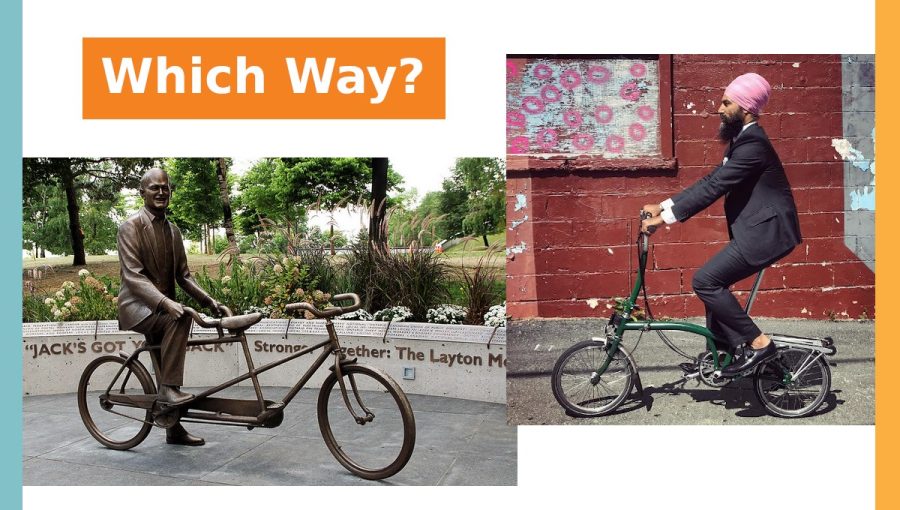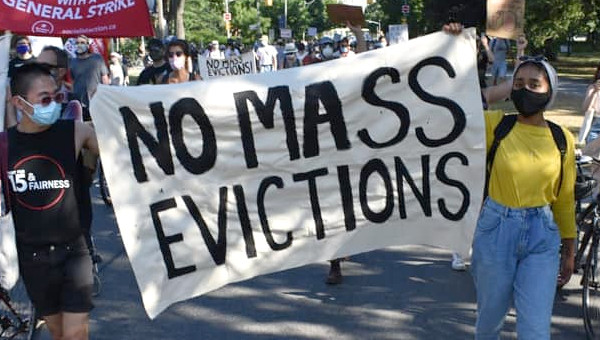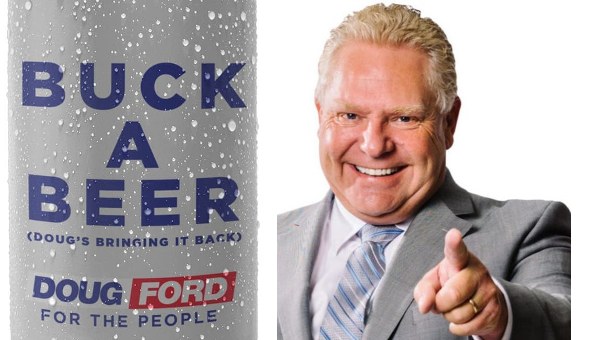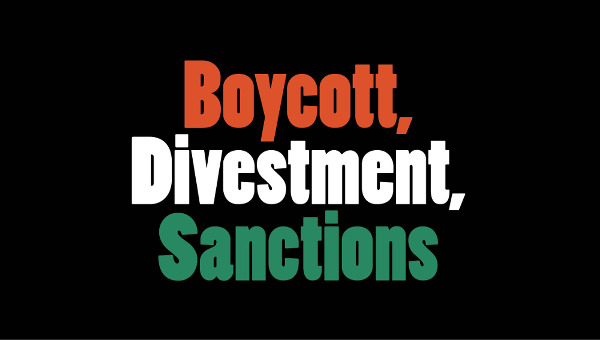Mulcair’s Victory: A New Direction for the NDP?
There is a lot of speculation going the rounds about whether or to what degree Thomas Mulcair will change the direction of the federal New Democratic Party (NDP). Mulcair, as everyone who pays attention to Canadian politics knows by now, emerged the winner in the NDP’s contest to replace deceased leader Jack Layton. In the fourth and final vote at the March 24 convention in Toronto, Mulcair scored 57 per cent against runner-up Brian Topp’s 43 per cent. The election of the party’s most prominent Quebec MP was no big surprise, especially in Quebec where it was widely considered the logical outcome to the NDP’s upset gains in last year’s federal election when the party won 59 of the province’s 75 MPs – 60 per cent of the NDP’s parliamentary caucus, making the party the Official Opposition and thus a credible contender for government for the first time in its history. But what does the election of this former Liberal mean for the future of the NDP? The answer is not entirely clear, although clues abound.
Modernization?

Dobbin pointed to Mulcair’s support of NAFTA, the North American Free Trade Agreement, anathema to the labour movement and environmentalists. “The NAFTA,” Mulcair said in a recent interview, “is the first international agreement that had provisions dealing with the environment. You can’t throw out the baby with the bath water.” Dobbin commented:
“The FTA and NAFTA were the single most damaging political acts the country has ever had to endure – unleashing two decades of suppression of wages, the rapid depletion of natural resources, falling productivity, the loss of several hundred thousand of the best jobs in the country, and despite Mulcair’s naïve declaration, the virtual end to any new environmental legislation by the federal government (after it lost two NAFTA challenges).”
But the NDP long ago abandoned any pretence of opposing NAFTA. Nor has it campaigned against the pending free-trade agreement with the European Union, currently being negotiated in secret. As for Mulcair’s concern for environmental issues:
“In 2007, Kady O’Malley interviewed Mulcair and asked him to describe himself as a politician. He replied: ‘Above and beyond anything else, I’m a public administrator and a manager. I chaired Quebec’s largest regulatory agency [the Office des Professions] and reduced staff there and brought in management schemes to make things more effective…. When I was minister of the environment, I reduced by 15 per cent the budget of the ministry.’…”
Palestinian solidarity activists are understandably alarmed at Mulcair’s unconditional support for Israel. His campaign co-chair was former MP Lorne Nystrom, now a director of the Centre for Israel and Jewish Affairs, the Israel lobby’s main pressure group. While co-deputy leader of the federal NDP, Mulcair publicly humiliated the other deputy leader, Vancouver MP Libby Davies, forcing her (with Layton’s complicity) to recant in Parliament her historically accurate statement that Israel has been occupying Palestinian land since 1948.
Although he may not have solicited their support, Mulcair appeared to be favoured for leader by some elements not known for their NDP sympathies.
Journalist and activist Derrick O’Keefe, examining the lists of donors to the NDP leadership campaign on the Elections Canada website, found that among those contributing to Mulcair’s candidacy were billionaire financier Gerald Schwartz, the CEO of Onex Corporation and a co-founder of CanWest Global Communications. Schwartz and his wife, book chain magnate Heather Reisman, founded the Heseg Foundation for Lone Soldiers, which provides money to cover tuition and living expenses for non-Israelis who serve in the Israeli army. “In 2006,” O’Keefe noted, “the couple made headlines by abandoning their traditional support for the Liberals in favour of the Conservatives after Stephen Harper had given full-throated support to Israel’s operation against Lebanon.”
Contributing to Mulcair’s leadership campaign as well was another Onex director, Anthony Munk, who is also a director of Barrick Gold Corporation, the Canadian mining giant founded by his father Peter Munk. Barrick is a prime target of environmentalists and indigenous struggling in many countries against its pillage of local communities and natural resources.
Also noteworthy was the especially sympathetic coverage given to Mulcair’s campaign in the journals of Canada’s major newspaper chains, Postmedia (successor to CanWest) and Groupe Gesca, a subsidiary of the Desmarais family’s Power Corporation.
What About the Liberals?
However, there was no indication of major policy differences among the candidates during the five public debates the party held.[1] In fact, the one question that attracted the most media attention was whether the NDP would or should now orient toward formal alliance or even merger with the federal Liberals. This speculation has increased now that Liberal interim leader Bob Rae, the former NDP premier of Ontario, shares the Opposition front benches with ex-Liberal Mulcair in the federal parliament.
Although Mulcair may, as alleged by many, be keen to remake the NDP into some version of Tony Blair’s “New Labour,” and thus an appropriate candidate to replace or merge with the Liberals, the NDP is determined at this point to firm up its position as a “government in waiting,” hoping to replace Stephen Harper’s Tory majority government in the next election three years from now. And the Liberals are still struggling to recover their historic position as Canada’s “natural governing party.” But there is no secret about NDP readiness to ally with Liberals if that will help ease their way into government.
In 2008, Layton signed a formal coalition agreement with the Liberals and the Bloc Québécois in an ultimately unsuccessful effort to defeat the Tory minority government. Such an arrangement has no traction at present, when there is no prospect of defeating the Tory majority in a parliamentary vote. However, among the membership of the NDP there is no substantial opposition in principle to closer ties with the Liberals. This was revealed in the leadership vote, in which every member of the party was entitled to cast a ballot, listing the candidates in their order of preference. About half the party membership of 131,000 voted on the first ballot, the only one with all the candidates listed. Thus it was a fair indication of the sentiments of the party activists.
On this first ballot, the top three candidates, accounting for two-thirds of the total vote (Mulcair 30%, Topp 21% and Nathan Cullen 16%), were those most closely associated with collaboration with the Liberals. Brian Topp, for instance, was a primary architect of the 2008 coalition agreement and has even written a book about it.[2] Cullen’s most notable contribution to the debates was his proposal that the NDP hold joint nomination meetings with the Liberals in future to try to come up with common candidates. Mulcair’s Liberal connections are well documented. No wonder MP Pat Martin did not have to carry out his promise (threat?) to run himself if no candidate promoted eventual merger with the Liberals!
And Quebec?
And then there is the Quebec question, historically the NDP’s Achilles heel. On this, too, there was no real discussion during the leadership candidates’ debates because none of them differ with the party’s firm defense of the federal regime. And least of all Thomas Mulcair. Although he was a long-time Liberal, and reportedly once considered joining the Conservatives, there is one constant in his political career: hostility to “separatism,” the movement for Quebec independence that is supported by the vast majority of progressive opinion in Quebec. Mulcair is a former director of legal affairs at Alliance Quebec, the federally-funded Anglophone lobby that has fought repeated court battles against Quebec’s Charter of the French Language (Law 101).
No one in Quebec expects the NDP to support Quebec independence. In 2011, however, the party managed to win the support of most of those voters in Quebec who were looking for some alternative to the Harper Tories in Ottawa, and it did this simply by indicating greater openness than other federalist parties to Québécois language concerns and tipping its hat to the right of self-determination – promising to recognize a majority vote for sovereignty in a Quebec referendum. Mulcair was not the author of these positions, which are set out in a document now known as the Sherbrooke Declaration, adopted prior to his transition to the NDP. However, he was one of the architects of the 2008 coalition agreement with the Liberals. That agreement was contingent on a promise by the Bloc Québécois not to vote with the Tories to defeat a Liberal-NDP minority government for at least six months. The NDP’s success in bringing the pro-independence Bloc onside at that time – even behind a coalition agreement that would have made Liberal leader Stéphane Dion, author of the hated Clarity Bill, the prime minister – may have fostered the image in Quebec of Layton’s NDP as a federalist party that was relatively sympathetic to Quebec. In fact, the Tories reinforced this perception by attacking the accord primarily on these grounds.
Will these positions be sufficient to consolidate and build the NDP’s shaky Quebec structure? During the leadership contest, the party managed to increase its membership in the province to just over 12,000, less than 10% of the total party membership in Canada, and a far cry from Mulcair’s hope of recruiting at least 20,000 new members. Since its electoral rout in 2011 the Bloc Québécois has regained support, and in a recent poll was neck-and-neck with the NDP. The Bloc boasts three times the membership of the NDP, and enjoys the collaboration of the formidable Parti québécois election machine.
The BQ’s new leader Daniel Paillé acknowledges that an NDP with Mulcair as leader will be a major challenge for his party, but argues, with justice, that the NDP will soon reveal its true colours by defending “Canadian” interests against those of Quebec. Le Devoir columnist Michel David perceptively notes, however, that Mulcair has “an argument that the Bloc Québécois cannot use: he is in position to replace the Harper government.” How this plays out in the next period will depend very much on whether the Quebec nationalist movement manages to overcome its current crisis of perspectives and resume its forward march – in which case the NDP, focused as it now is on winning parliamentary seats in English Canada, will be faced with some major political dilemmas.
There was a foretaste of these tensions in one of the leadership debates. When candidate Peggy Nash suggested that federal enforcement of the Canada Health Act (an umbrella law imposing medicare funding conditions on the provinces, which have jurisdiction over health care) might have to be adjusted to accommodate Quebec concerns, the other candidates quickly dissociated themselves from her comment. That was the closest the debates came to addressing “the Quebec difference.” Nash, a former official in the Canadian Auto Workers union, probably had in mind the readiness of the Canadian unions to accommodate their Quebec affiliates, according them a large degree of autonomy. The NDP has never displayed similar flexibility to its Quebec membership.
Marginalization of Labour
This leadership convention registered the further marginalization of labour in the NDP. In the last leadership convention, which elected Layton in 2003, the affiliated trade unions were allocated 25% of the votes; this was consistent with a series of provisions in the party constitution and practices historically that had given the unions a weighted presence in party leadership bodies. Following that convention, however, the party removed this provision and moved toward a full one-member-one-vote (OMOV) system for choosing a leader. The move was motivated in part by changes in federal party financing laws in 2003 and 2006 (with NDP support) which banned union donations to federal parties. In return the NDP, like the other parties, gained access to new state subsidies. In addition, individual donors are allowed tax deductions of up to 75% of the amount of their contributions to party finances, a “tax expenditure” that constitutes in effect another form of state funding. The NDP is now dependent on such funding for the bulk of its activities.
As Murray Cooke has noted, these changes in funding, and the adoption of OMOV, resulted in “a relative marginalization of the federal [parliamentary] caucus, the powerful provincial wings, unions and local party activists.” And he adds:
“Firmly in control of the party, Layton was able to moderate, simplify and carefully package the NDP message. He simply ditched many controversial policies. During the 2004 election, he single-handedly dismissed the NDP’s longstanding support for pulling Canada out of NATO.[3] With each campaign, Layton would focus on a small number of modest reforms. Increasingly, the NDP would speak for ‘middle-class’ Canadians. By the 2011 election, the NDP was proposing to reduce the small business tax to reward ‘job creators.’ Certainly, the 2011 platform was a more moderate program than anything ever offered under any previous federal NDP leader….”
The marginalization of the party’s labour base did not start with Layton, of course. In the neoliberal phase of capitalism of recent decades, many unions have loosened their ties with the NDP, and not just at the NDP’s behest. A notable example has been the flirtation with the Liberals of leaders of the Canadian Auto Workers, a union that in past years was respected by militants as a foremost fighter against bosses’ pressure for concessions in union contracts. These trends reflected a more general shift to the right in Canadian politics under the neoliberal onslaught on wages, working conditions and social programs.
Of the nine candidates who ran for NDP leader this year (two dropped out during the campaign), only one – Peggy Nash, a former CAW leader, and one of only two women candidates – came from the union milieu. It is worth noting, however, that she was the first ever candidate for the party leadership from trade union ranks. Notwithstanding, Nash lacked support from some major union leaders in the party, and in the end finished in fourth place with 12 per cent support on the first ballot.
An Alternative Approach?
Perhaps most ominously, while union ties to the NDP have slackened they have not been replaced by closer collaboration between the party and grassroots organizations in the front lines of the fight against the capitalist offensive. Among the leadership candidates, only Niki Ashton (5.7% on the first ballot) alluded (indirectly) to the Quebec students’ inspiring upsurge for greater access to education.
The NDP can at times be a useful asset for militants in the extra-parliamentary arena. Last June the party’s newly-elected MPs mounted a parliamentary filibuster in opposition to the Harper government’s suppression of the postal workers’ right to strike; some MPs participated in public solidarity rallies. These actions helped to publicize the workers’ cause and the party’s standing rose still further in the polls.
Governments in Ottawa and across the country are now targeting public sector unions and services, as well as the poorest and most vulnerable in society – from welfare moms to pensioners – in pursuit of a shared agenda of tightening austerity and cutbacks. The NDP faces mounting challenges in the period ahead – on the economic, social, constitutional and international fronts – but with Mulcair at the helm the signs point to a continuing shift of the party to the right.
Overall, the NDP emerges from this leadership convention poorly armed to confront the crisis. Its leaders are clearly hoping to ride into government in three years on a program that differs only modestly from the right-wing Tory agenda. True, it might prove sufficient in electoral terms. But it will not do much to build the mass movements that are needed to oppose and overcome the neoliberal assault. •
This article first appeared on Richard Fidler’s blog Life on the Left.
Endnotes:
1.
See, for example, Roger Annis, “NDP Leadership Candidates Debate Foreign Policy, Or Not.”
2.
For a critical summary of the book’s argument, see Murray Cooke, “The Canadian Parliamentary Crisis of 2008-09: Searching for a Left Response,” Socialist Studies/Études socialistes, 7(1/2) Spring/Fall 2011, p. 318.
3.
In fact, although party membership conventions had voted for withdrawal from NATO, the party leadership never campaigned or spoke against NATO, and in the 1990s supported NATO’s assault on Yugoslavia.





